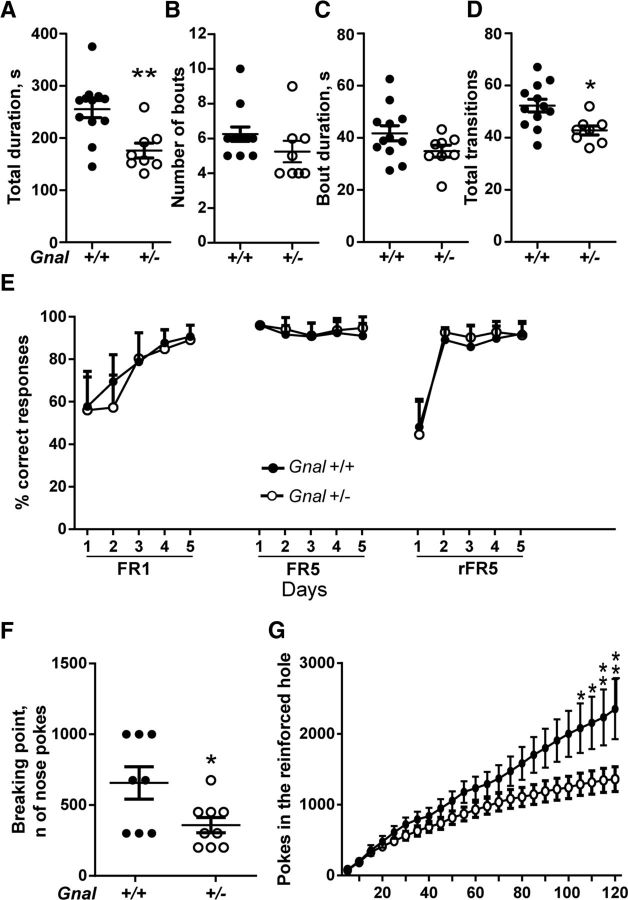Figure 3.
Self-grooming and operant conditioning alterations in Gnal+/− and WT mice. A–D, Water-spray-induced grooming was analyzed in Gnal+/− and WT littermates (n = 8–12 per group) for 10 min. A, Duration of grooming in the session (t = 3.62, p < 0.01). B, Number of grooming bouts (Student's t test, t = 1.34, p = 0.21). C, Mean duration per bout (Student's t test, t = 1.71, p = 0.11). D, Number of transitions counted during the grooming activity (t = 3.14, p < 0.05). E, Food-restricted Gnal+/− mice and WT littermates (n = 11–12 per group) had to nose-poke in an active hole to obtain food pellets during 5-day of daily sessions under, successively, FR1, FR5, and reversed FR5 (rFR5, active and inactive holes were inverted) schedules. No significant difference was detected between Gnal+/− and WT mice. Two-way ANOVA: session, F(14,210) = 47.35, p < 0.0001; genotype, F(1,15) = 0.003, p = 0.9; interaction, F(14,210) = 0.9, p = 0.55. F, The day after the last rFR5 session, the mice were tested under the PR schedule. In the Gnal+/− animals, the breaking point (number of pokes for the last pellet earned) is decreased compared with WT (t = 2.4, p < 0.05). G, Time course of cumulative nose pokes in the progressive ratio sessions. Two-way ANOVA: genotype, F(1,15) = 3.45, p = 0.08; time, F(23,345) = 63.21, p < 0.0001; interaction, F(23,345) = 5.3, p < 0.0001. Data are shown as means ± SEM. *p < 0.05; **p < 0.01.

